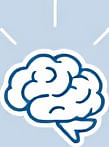Wearable Technology for Streamlining Reminders and Easing Mental Overload
 by Marlene Keeling
by Marlene Keeling
Explore how wearable devices like smartwatches can manage reminders, helping to reduce cognitive load in daily routines. This approach offers practical strategies for students and professionals to enhance focus and productivity through simple tech integrations.

Wearable technology has become a key tool in managing everyday tasks, particularly by handling reminders that often clutter our minds. For instance, devices such as smartwatches can take over the role of remembering appointments, easing the burden on our mental resources.
In the context of cognitive load, this means less strain on working memory, allowing individuals to concentrate on more pressing activities. Cognitive load refers to the amount of mental effort used in processing information, and wearable tech provides a straightforward way to distribute this effort.
One effective strategy involves using smartwatches for daily scheduling. These devices can send timely notifications for meetings or deadlines, freeing up space in your thoughts for creative work. For students, this might mean setting reminders for study sessions, which helps maintain a balanced routine without constant mental tracking.
Professionals often deal with multiple responsibilities, making it essential to automate routine alerts. A smartwatch can vibrate with cues for breaks or emails, promoting better time management and reducing forgetfulness. This integration of technology into daily life supports overall well-being by minimizing the stress of oversight.
Benefits for Different Groups
For students, wearable tech offers a way to handle academic demands. Imagine receiving a gentle buzz for an upcoming exam review, which allows for better retention of material without the mental fatigue of constant checking. Productivity improves as these tools handle the minutiae, letting learners focus on deeper learning.
In professional settings, the ability to offload routine alerts can lead to enhanced performance. For example, a fitness tracker with reminder functions can prompt hydration or movement, supporting sustained energy levels throughout the day. This not only aids in task completion but also contributes to long-term health benefits.
Practical Tips for Implementation
To get started, select a device that aligns with your needs. Look for features like customizable alerts and compatibility with your phone. Once set up, begin by programming simple reminders, such as medication or meal times, to build a habit.
Create a routine for checking and updating these notifications, perhaps at the start of each week. This ensures that the system remains relevant and effective. Over time, you can expand to more complex uses, like integrating with calendars for project milestones.
Another tip is to pair wearable tech with other organizational methods. For instance, using voice commands to set reminders can make the process even quicker, reducing the cognitive effort required upfront.
Potential Challenges and Solutions
While wearable technology is helpful, challenges like battery life or notification overload can arise. To address this, choose devices with long-lasting batteries and limit alerts to only the most critical ones. This keeps the system supportive rather than intrusive.
For those new to this tech, starting small can prevent overwhelm. Begin with one or two types of reminders, such as daily exercise cues, and gradually add more as you adapt.
In summary, incorporating wearable technology into your routine can significantly lighten cognitive load by managing reminders efficiently. By doing so, students and professionals alike can enjoy greater focus and a more relaxed mindset. The key is consistent use and adjustment to fit personal needs, leading to noticeable improvements in daily life.
Through these approaches, the potential for enhanced mental clarity becomes clear, making wearable tech a valuable ally in modern living.
